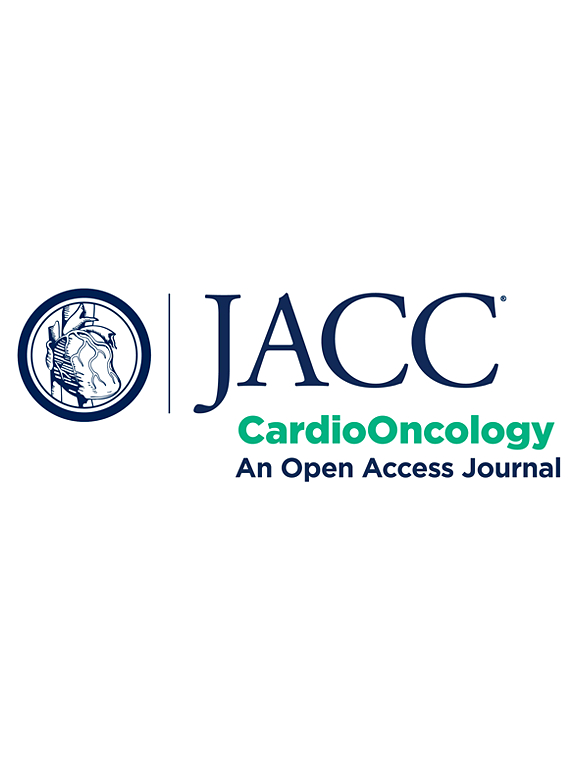Effects of Systemic Anticancer Treatment on Cardiorespiratory Fitness
IF 12.8
1区 医学
Q1 CARDIAC & CARDIOVASCULAR SYSTEMS
引用次数: 0
Abstract
Background
Poor cardiorespiratory fitness (CRF) is associated with a higher symptom burden and an increased prevalence of long-term treatment–related cardiovascular disease risk factors in cancer survivors. However, the magnitude of systemic therapy–related CRF impairment remains unclear.
Objectives
The aim of this study was to evaluate the effects of systemic anticancer treatment on CRF and identify physiological determinants underpinning CRF impairment.
Methods
A systematic literature search was performed in PubMed, Embase, CINAHL, SPORTDiscus, and the Cochrane Library. The primary endpoint was the change in CRF, measured by peak oxygen consumption (Vo2peak), from before to after systemic treatment. Secondary endpoints included post-treatment differences in Vo2peak between cancer survivors and noncancer control subjects, along with physiological determinants of Vo2peak. Two meta-regressions were conducted to examine the association between CRF and cardiac output and arteriovenous oxygen difference.
Results
A total of 44 studies were included, comprising 27 prospective trials (61%; n = 1,234 cancer survivors, median age 52.4 years) and 17 cross-sectional studies (39%; n = 1,372 cancer survivors, median age 54.0 years; n = 1,923 noncancer control subjects, median age 56.0 years). Systemic anticancer treatment was associated with a significant decrease in Vo2peak (weighted mean difference −2.13 mL·kg−1·min−1; 95% CI: −2.76 to −1.50 mL·kg−1·min−1). No significant differences were observed between patient subgroups (esophagogastric, breast, and colon or rectal cancers). At a median follow-up of 2 years (range: 6 weeks to 12 years) post-therapy, cancer survivors had a significantly lower Vo2peak (weighted mean difference −6.39 mL·kg−1·min−1; 95% CI: −7.60 to −5.18 mL·kg−1·min−1) compared with noncancer control subjects. Reduced arteriovenous oxygen difference was associated with lower Vo2peak (β = 2.55; 95% CI: 2.05-3.06; P < 0.001).
Conclusions
Systemic anticancer treatment leads to substantial and sustained impairments in CRF.
全身抗癌治疗对心肺健康的影响
背景:在癌症幸存者中,较差的心肺功能(CRF)与较高的症状负担和与长期治疗相关的心血管疾病危险因素的患病率增加有关。然而,与全身治疗相关的CRF损害的程度仍不清楚。本研究的目的是评估全身抗癌治疗对CRF的影响,并确定CRF损伤的生理决定因素。方法系统检索PubMed、Embase、CINAHL、SPORTDiscus、Cochrane Library等文献。主要终点是全身治疗前后CRF的变化,通过峰值耗氧量(Vo2peak)来测量。次要终点包括治疗后癌症幸存者和非癌症对照组之间的Vo2peak差异,以及Vo2peak的生理决定因素。进行了两次meta回归来检验CRF与心输出量和动静脉氧差之间的关系。结果共纳入44项研究,包括27项前瞻性试验(61%;N = 1,234名癌症幸存者,中位年龄52.4岁)和17项横断面研究(39%;N = 1372例癌症幸存者,中位年龄54.0岁;N = 1923名非癌症对照者,中位年龄56.0岁)。全身抗癌治疗与Vo2peak显著降低相关(加权平均差- 2.13 mL·kg - 1·min - 1;95% CI:−2.76 ~−1.50 mL·kg−1·min−1)。在患者亚组(食管胃癌、乳腺癌、结肠癌或直肠癌)之间没有观察到显著差异。在治疗后中位随访2年(范围:6周至12年),癌症幸存者的vo2峰值显著降低(加权平均差- 6.39 mL·kg - 1·min - 1;95% CI:−7.60 ~−5.18 mL·kg−1·min−1)。动静脉氧差降低与Vo2peak降低相关(β = 2.55;95% ci: 2.05-3.06;P & lt;0.001)。结论全身抗癌治疗可导致CRF发生实质性和持续性的损伤。
本文章由计算机程序翻译,如有差异,请以英文原文为准。
求助全文
约1分钟内获得全文
求助全文
来源期刊

Jacc: Cardiooncology
Multiple-
CiteScore
12.50
自引率
6.30%
发文量
106
期刊介绍:
JACC: CardioOncology is a specialized journal that belongs to the esteemed Journal of the American College of Cardiology (JACC) family. Its purpose is to enhance cardiovascular care for cancer patients by publishing high-quality, innovative scientific research and sharing evidence-based knowledge.
The journal aims to revolutionize the field of cardio-oncology and actively involve and educate professionals in both cardiovascular and oncology fields. It covers a wide range of topics including pre-clinical, translational, and clinical research, as well as best practices in cardio-oncology. Key areas of focus include understanding disease mechanisms, utilizing in vitro and in vivo models, exploring novel and traditional therapeutics (across Phase I-IV trials), studying epidemiology, employing precision medicine, and investigating primary and secondary prevention.
Amyloidosis, cardiovascular risk factors, heart failure, and vascular disease are some examples of the disease states that are of particular interest to the journal. However, it welcomes research on other relevant conditions as well.
 求助内容:
求助内容: 应助结果提醒方式:
应助结果提醒方式:


